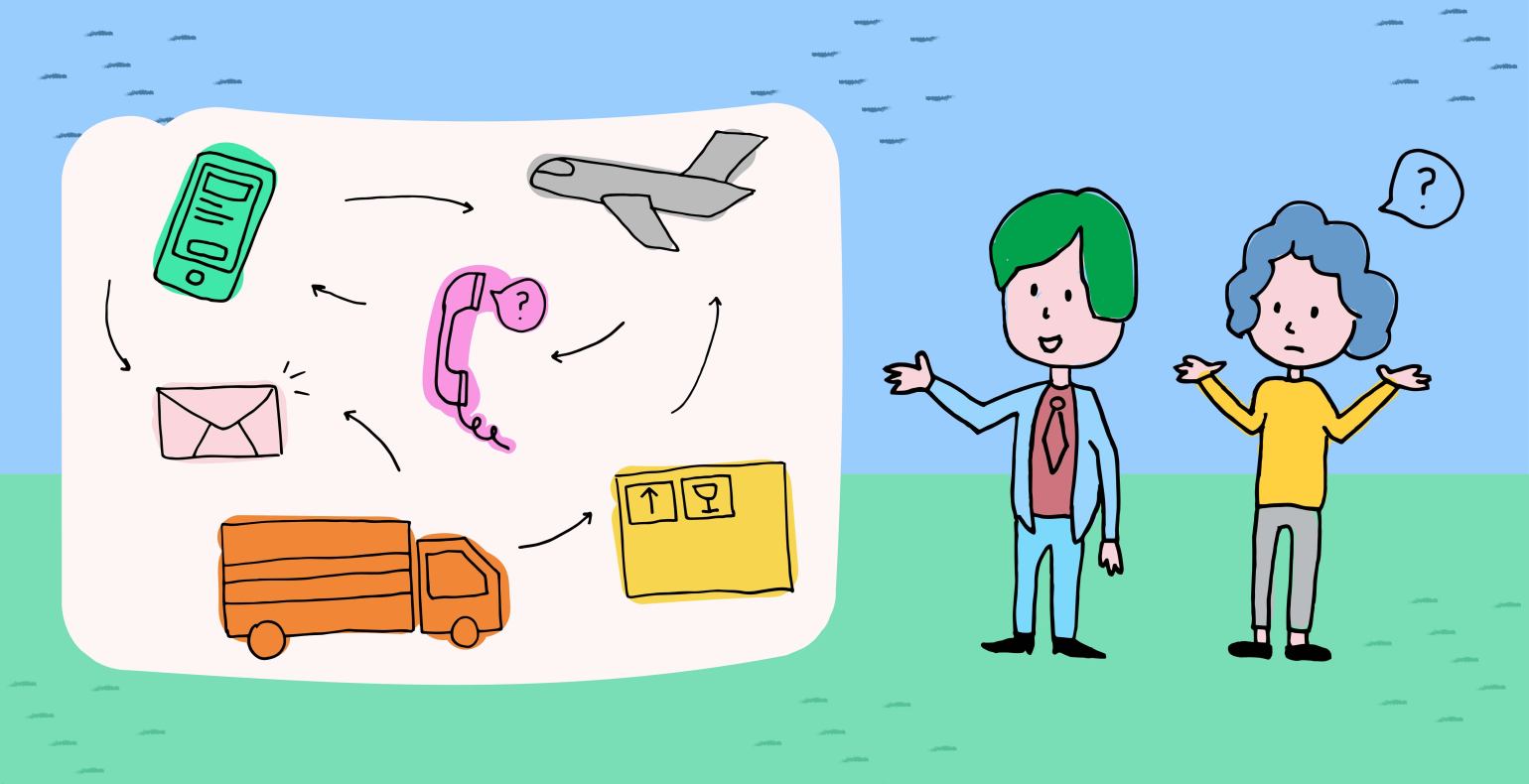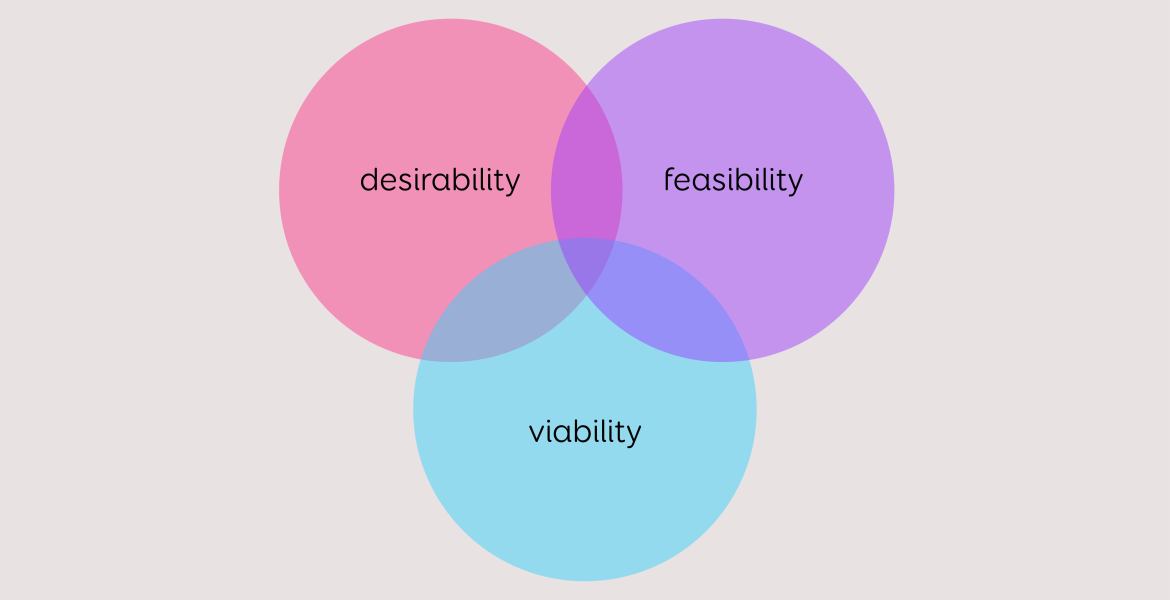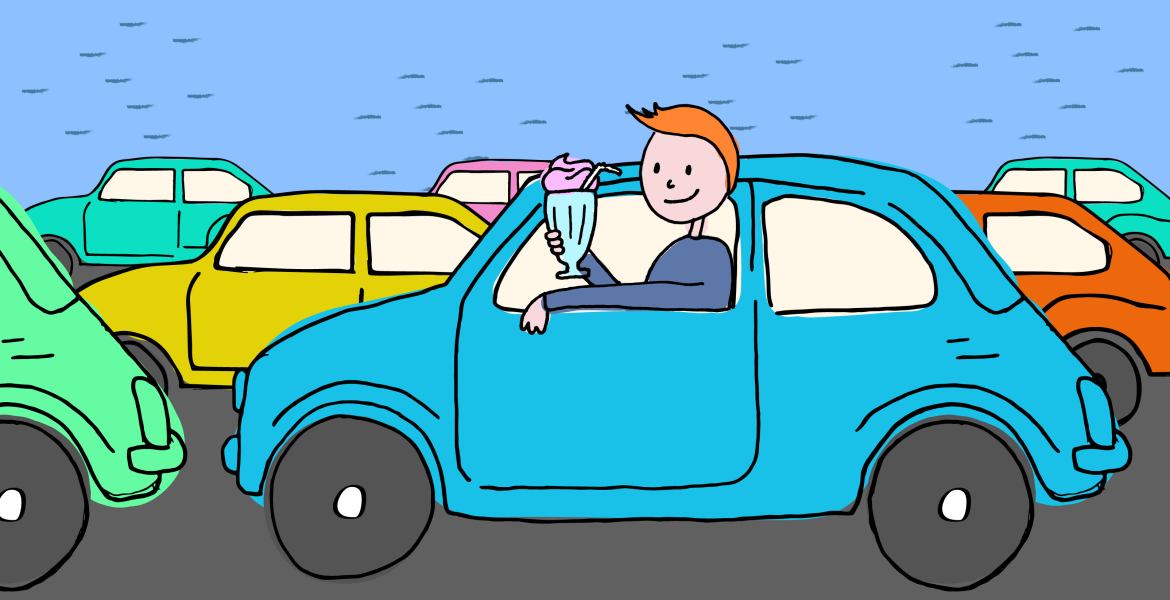When should a service designer be involved in a project?
In a previous article, we explored the appropriate circumstances for involving a business analyst. Now, we delve into a series of posts regarding service design. This time, we will address how to determine when it is necessary to engage a service designer in a project and the potential benefits that can be derived from incorporating service design.
What are the indicators of insufficient service design in business?
“For instance, if you have ever pondered why your customers sometimes misuse the service or product, it is already an indication that there is an opportunity for service design," elucidates Helen Susan Selirand, a service designer at Trinidad Wiseman.
Identifying these indicators may not be straightforward, as some of them may appear to be ordinary intricacies inherent in business operations. Below, we present a set of guiding questions to assist you in assessing whether involving a service designer should be considered. If you answer affirmatively to any of these questions, then proceed with reading, as this post may provide valuable insights for you.
Guiding questions:
- Do you lack a comprehensive understanding of your customers and competitors?
- Do you lack clear insights into the motivations of buyers, such as the value, emotions, or solutions they are genuinely seeking?
- Do customers frequently approach you with recurring queries?
- In your perspective, do customers misuse the service or product? For instance, have you found yourself needing to inform customers that their approach is incorrect and suggest an alternative method?
- Do your colleagues or employees, in your opinion, provide the service inaccurately? For example, have you repeatedly had to explain work processes, only to find them operating differently?
- Do you wish to effectuate changes but lack precise understanding of how responsibilities are distributed in delivering the service?
- Is it challenging to convene relevant stakeholders in one place, and do you sense that interdepartmental collaboration could be improved?
- Have you convened numerous meetings to identify problems and seek solutions, yet progress remains elusive?
- Do you frequently encounter excuses such as "I know," "it's not possible," "nothing can be done about it," "we can't do it like this," "we have to wait," "it will be fixed when..." etc.?
- Are you constantly extinguishing crises while acknowledging that you should allocate time to identify the root cause?
- Is your service/product of high quality, yet customers either underutilize it or discontinue usage prematurely?
- Are customers satisfied with the service/product, but the cost of sustaining it makes it challenging for you to continue offering it?
- Do you seek impartial expert feedback on your business ideas and doubts before launching them?
What is service design and why is it necessary?
Service design is a dynamic and creative process that uncovers innovative solutions for services and products by approaching customer needs and service delivery opportunities from a fresh perspective. It places emphasis on the customer experience, business sustainability, and competitive advantage.
Through service design, an organization can strategically align its services, offered products, and overall business operations to ensure they are not only essential and desirable for customers but also sustainable and meticulously planned. It eliminates randomness in the company's internal operations. In our previous post, we discussed how service design facilitates a comprehensive understanding of the bigger picture.
What inquiries does service design aim to address?
Seeks to answer three fundamental questions:
- What specific need does the service fulfill for the customer, or in other words, what "job" does the customer hire the service to do?
- What alternative solutions exist for fulfilling this "job," including competing value propositions, services, products, or solutions?
- In what manner can the customer's needs be most effectively and commercially sustainably met?
„For instance, let's consider the example of the milkshake, which discovered a successful solution through the application of the jobs-to-be-done method. McDonald's objective was to boost milkshake sales. A consultant began observing and interviewing people and discovered that the 'job' of the milkshake was to provide something substantial to consume during a long morning commute without the need to rush through it.
A banana could also fulfill this 'job,' but it's inconvenient to peel while driving and doesn't last as long as a milkshake. A refreshing and easily consumable milkshake, enjoyed with one hand and through a straw, was the ideal solution. Consequently, placing milkshakes at the front counter and implementing pre-paid cards for expedited and queue-free service to busy morning customers proved successful. Furthermore, by making the consistency of the milkshake thicker, its longevity was extended. As a result, sales soared!" recalls Helen Susan Selirand.
What are the potential outcomes of a service design project?
The deliverables of a service design project can vary significantly based on the project's objectives. They may include an array of tangible assets such as a compilation of pain points and potential solutions, a service blueprint, a service model, a mapped customer journey, personas, guidelines for employees, guidelines for organizing the work environment, or requirements for the user interface.
In the realm of IT projects, the deliverables may serve as valuable input for subsequent phases. For instance, a meticulously crafted user journey can serve as a solid foundation for UX/UI designers and developers tasked with creating a new information system or e-service. In certain cases, the outcomes may not be tangible in nature. Rather, relevant stakeholders are brought together, employing strategic service design methods to discuss problems and solutions.
This fosters a shift in mindset among participants, enhances their understanding of each other's roles, and facilitates improved collaboration. As a result, the service becomes smoother from the customer's perspective and more efficient from a business standpoint.
„To illustrate this, let me share an example from the public sector—an anecdote about how service design accelerated service ideation and fostered collaboration among government agencies. At the request of the Ministry of Economic Affairs and Communications, we conducted a design sprint during the autumn-winter of 2022 to adapt events as a service in Estonia. We brought together representatives from two ministries and six government agencies responsible for various aspects of event services.
It was a transformative experience, breaking down the silos between responsibilities and prioritizing actions with the customer experience in mind. This way, we ensured that the ball was not dropped right from the inception of the service. After four sprint days, we achieved a shared understanding of the desired outcome, developed an initial prototype, and established an interagency working group to continue collaboration. By the third quarter of 2023, the event service is scheduled to be launched as an information service on the eesti.ee platform," illustrated Helen Susan Selirand.
At what stage should a service designer be involved, and how long can the collaboration last?
The previous example exemplifies that a service design project doesn't necessarily have to be long-term. It can also be a focused exploration of a hypothesis—testing whether assumptions hold true or not. Even just one or a couple of workshops can be instrumental in making informed decisions that propel progress.
Not everything needs to be completely overhauled right away. Furthermore, the service design stage presents numerous decision points. Once the process transitions into UX, UI, and development phases, it becomes increasingly challenging to halt the momentum.
„We offer a one-day service design workshop format that doesn't even require a comprehensive brief. If you've noticed symptoms and have doubts that something isn't right, that's enough. In the workshop, we employ well-established service design methods that help us uncover the root cause of the problem. Waiting until the development stage to propose solutions may already be too late," explains Helen Susan Selirand.
When should the service design stage not be skipped in a project?
Skipping the service design stage is ill-advised in three cases. When...
- developing a new service/product and/or targeting it to a new audience;
- an existing service no longer performs at the desired level - whether due to problems with business sustainability, customer feedback/consumption, or emerging technological opportunities for service provision;
- there is a need to restructure the company's portfolio of services and products.
When is it not worth doing service design, and what are the biggest mistakes that can be made in a service design project?
Service design is not worth pursuing in three scenarios. When…
- service design has already been conducted;
- the results of service design are not intended to be taken into account;
- there is no willingness to collaborate, meaning the service designer is not granted access to the business.
The most significant mistake arises from the last situation, where only the "best" and "flawless" aspects are presented to the service designer, situations are staged, and the service designer is kept at arm's length from the reality of the business, its influencers, and stakeholders.
„The service designer is always part of the same team—they are not adversaries. It's essential to welcome and allow them to uncover your pain points and challenges. Only then can you truly benefit from their expertise," notes Helen Susan Selirand.
Does involving a service designer save time and money?
The earlier a problematic aspect is identified or avoided, the more time and money can be saved. At some point in a project, it may become evident that a solution based on assumptions or desires does not align with the actual needs of the clients or present an effective problem-solving approach.
By completing the service design phase at the appropriate stage, it is likely that a cost-effective alternative can be discovered from the outset.
„Why not add some nuances to the service that create new value and meaning for the customer in consuming the service, thus providing a competitive advantage or differentiation, without affecting costs or work processes in future development or implementation," says Helen Susan Selirand.
Can everyone engage in service design themselves?
The principles of service design are rooted in common sense and the best design practices and theories. It is a comprehensive methodology accompanied by a range of methods that can be acquired, accessed, and applied by anyone.
However, it is advisable to engage the expertise of a service designer who is well-versed in these methods, possesses valuable insights into user research, and has acquired extensive experience in navigating various internal processes, deftly avoiding common pitfalls. Just as we rely on engineers for intricate calculations, even though we can all handle a calculator proficiently.
„In reality, mere knowledge of methodologies falls short. A proficient service designer is characterized by qualities such as empathy, curiosity, a particular mindset, and intellectual thought patterns. They are willing to set aside their own ideas, view problems as solvable, and exhibit creativity in devising solutions," says Helen Susan Selirand.
To summarize
To summarize, if you lack experience but aspire to comprehend the customer's needs, identify competing alternatives, and offer commercially beneficial and appealing solutions, we recommend involving a service designer in your project.









